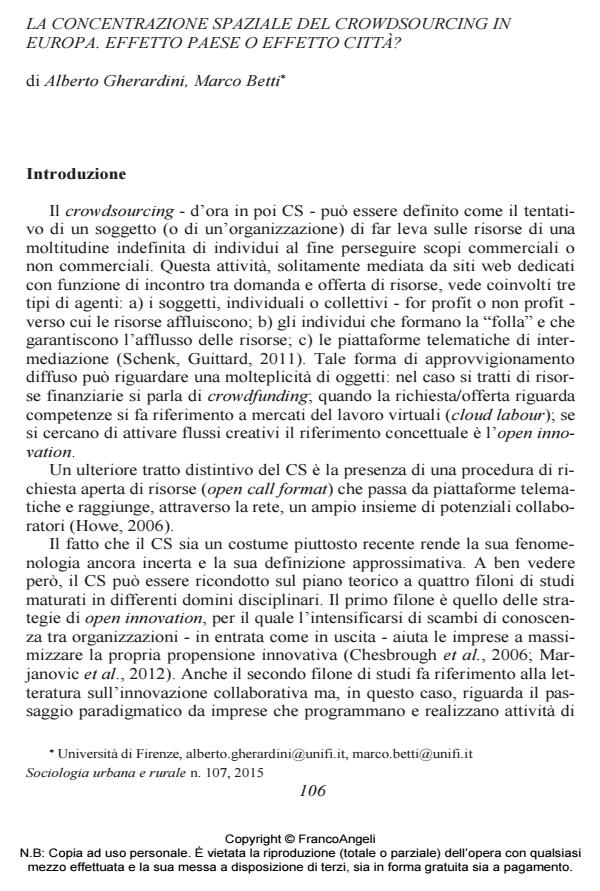La concentrazione spaziale del crowdsourcing in Europa. Effetto paese o effetto città?
Titolo Rivista SOCIOLOGIA URBANA E RURALE
Autori/Curatori Alberto Gherardini, Marco Betti
Anno di pubblicazione 2015 Fascicolo 2015/107
Lingua Italiano Numero pagine 15 P. 106-120 Dimensione file 134 KB
DOI 10.3280/SUR2015-107008
Il DOI è il codice a barre della proprietà intellettuale: per saperne di più
clicca qui
Qui sotto puoi vedere in anteprima la prima pagina di questo articolo.
Se questo articolo ti interessa, lo puoi acquistare (e scaricare in formato pdf) seguendo le facili indicazioni per acquistare il download credit. Acquista Download Credits per scaricare questo Articolo in formato PDF

FrancoAngeli è membro della Publishers International Linking Association, Inc (PILA)associazione indipendente e non profit per facilitare (attraverso i servizi tecnologici implementati da CrossRef.org) l’accesso degli studiosi ai contenuti digitali nelle pubblicazioni professionali e scientifiche
L’articolo analizza la concentrazione spaziale delle piattaforme di crowdsourcing in 11 paesi europei mostrando l’inappropriatezza degli approcci della teoria sulla varietà dei capitalismi e del concetto di sistema nazionale dell’innovazione. Il fenomeno è più correttamente interpretabile utilizzando come unità di analisi la dimensione urbana. Le piattaforme si addensano maggiormente in città metropolitane, ricche di capitale umano qualificato e caratterizzate da un clima di fiducia negli altri.
Parole chiave:Clusters, crowdsourcing, varietà dei capitalismi, sistemi nazionali dell’innovazione, studi urbani, micro-finanza
Alberto Gherardini, Marco Betti, La concentrazione spaziale del crowdsourcing in Europa. Effetto paese o effetto città? in "SOCIOLOGIA URBANA E RURALE" 107/2015, pp 106-120, DOI: 10.3280/SUR2015-107008